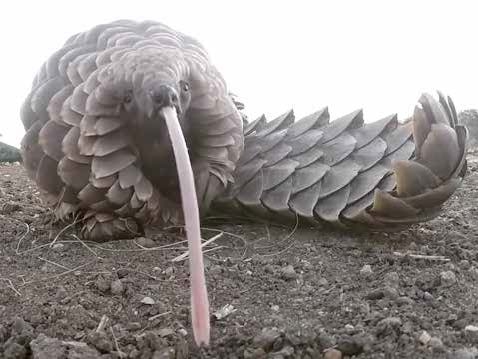“On the Trail” n°18 [1]
Quarterly information and analysis bulletin on animal poaching and smuggling [1]
748 events. July 1 to September 30, 2017 [1]
124 pages illustrated [1]
pdf – 4.3 Mo [1]
Original in French
Seahorses, corals, abalones, giant clams, triton’s horns, noble pen shells, sea cucumbers, fishes and crustaceans, pages 4 to 13
KO and Ciao abalones (Haliotis spp.) – p.5
On August 7, the South African Department of Fisheries discontinued the granting of fishing licenses. Abalone catching falls into the hands of Cape Town gangs and the Chinese mafia. On the local marketplace, the price per kg has hit $400 US. It was $40 US in 2008. Violence and corruption are almost alone to flank the exploitation and then smuggling of the marine gastropods. Even the farms are looted.
The European Union, and in particular France, Spain, Italy, Portugal, and the United Kingdom, would be well-advised to carefully examine this black market, which started originally from recreational and subsistence fishing. They can learn from this example, in order to prevent the extinction of abalone and other rocks and tidal flats dependent species.
The pirate barometer – p.4-14
Kg of seahorses: $67 US
Kg of sea cucumbers: $155 US
Inch (2.54 cm) of narwhal tusk: $250 US
Kg of totoaba swim bladder (Appendix I): $14,000 US
Kg of hammerhead sharks fins (Appendix II): $103 US
Kg of eels (Appendix II): $2,440 US
Turtle break-ins and breakages – p.15
The forecast is very poor for marine turtles. They are lusted after as a whole: eggs, meat, scales, shells. No ocean is spared. The black market is violent. A new protector of leatherback turtles on the beaches was murdered in Central America. The largest seizure was made at Charles de Gaulle Airport in Paris, demonstrating once again that Europe, contrary to popular belief, is a trafficking hub.
Pangolins – p.37
The inclusion of eight pangolin species in Appendix I is in effect since January 2, 2017.
At the same time, the amount of scales seized during the third quarter of 2017 reached 17,602 kg, a record since the launch of “On the Trail,” far ahead of the preceding record set in the third quarter of 2016 at 9,888 kg of scales seized.
The demand is very high and has a long history. In China, 716 establishments have been authorized to prescribe pharmaceutical pangolin scales products (cf. “On the Trail” n°15 p. 43). Until that point, laboratories were supplied using genuine or falsified CITES permits.
Lions: green light for poachers – p.57
The decline of tigers in Asia has a domino effect on lions in Africa. The recent South African decision to authorize the annual exportation of 800 farmed lion skeletons has unleashed poachers. Poisoning and mutilation of wild and farmed lions are increasing in southern Africa. A lion skeleton sells for $3,000 US in the regional market, ten times higher in China where lion bones substitute for tiger bones in various recipes that are reputed to cure rheumatisms and sexual insufficiencies.
The strain on lions is also fueled by a local rumor that eating lion heart “scares away enemies and protects against attacks.”
Rhinoceros – p.68.
It’s True, Yet Without a Doubt, False
Testimonies from vendors and antique dealers interviewed by Elephant Action League show that rhino horns on the Chinese market are fake – at least 80%, that the rhino items for sale on WeChat are phoney, and that it is easy to find an expert complicit in the scheme to tell you it is a genuine horn even though he knows at first glance that it is fake. Counterfeit jewelry, antiques or horns are actually made with crushed resin, hooves and horsehair. Clandestine workshops have even managed to lure famous auction houses. Some prices on the fool’s market:
1 bowl : 42,000 US$
1 bracelet : 1,500 US$
4 bracelets (950 g) : 140 US$/g
Powder tablets : 260 to 440 US$/g
Pearls : 117 US$/g
Small sculpture : 103 US$/g
For the record, O’Brien, senior of the Irish gang Rathkeale Rovers, has a good knowledge of fake horns (cf. “On the Trail” n°16 p. 70).
Elephants – p.82
– Seizures increase: 15 tonnes for July, August, and September 2017.
– The price per kg of ivory seized falls, according to the taxation authorities in the affected States.
It is too early to draw lessons from these official quotes, which concern exclusively African elephants (Loxodonta africana). In Kampala (Uganda), a kg of raw ivory was valued at $112 US/kg in August while in July it was $1,470 US/kg.
-Poaching is on the rise in Southern Africa. In Central Africa, in the Nile basin and in Sahelian Africa, the shadow borne by civil wars prevents an accurate death toll for elephants, as well as for other profitable wildlife species. It is imprudent to claim that poaching is in decline on the African continent.
– Asian elephants (Elephas maximus) are no better off. They are harassed between and around the national parks, by the expansion of agriculture and illegal campsites. The black market extends to other by-products beyond male elephant tusks. Confetti made from elephant skin sells for $3.65 US, or $5,660 US per m2 in Myanmar.
Donkeys in Africa – p.121
After the pack, the slaughterhouse
The trafficking of domestic donkeys originating from the wild species continues to provoke demonstrations of compassion and hostility among the general public, farmers, and veterinarians, due to the cruelty, violence, and amplitude of the trade.
On one hand, several governments are concerned and they are suspending the export of skins to China. On the other hand, some governments validate the “state-of-the-art” abattoir projects set up by Chinese interests and “specialists.”
Download “On the Trail” n°18 [1]
